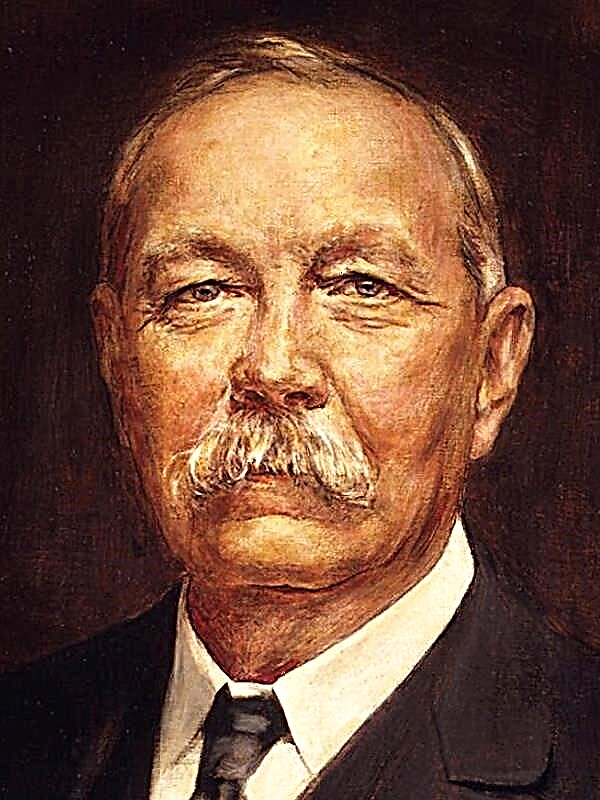Market segmentation
Determine which market niches are most promising for your idea or technology. Make sure customers really buy your product and market share grows.
- Consider all options for using a product or service.
- Identify specific markets and applications for your product.
- Find out the difficulties of potential customers, and consider whether you really can ease them.
- Think very broadly.
The final result can be very different from the original idea of it. Spend at least a few weeks on initial market research.
Choosing a bridgehead
Choose a market that will become your springboard according to the following criteria:
- All consumers buy the same product for the same purpose.
- All consumers make similar demands on products.
- The word of mouth operates in the market, people consult with each other.
Such a market will reduce marketing costs due to economies of scale and the “viral effect”. Do not choose a large market as a bridgehead, first practice on a small one.
End User Feature
For different groups of buyers, there are different methods of sales. Characteristics of target consumers should include:
- Gender, age and income level of buyers.
- Their fears and motivation.
- Their role model.
- Favorite TV shows.
- The purpose of acquiring your product.
- Their hopes and aspirations.
- Their grief and difficulties.
Calculation of the capacity of the total affordable market
The market should provide positive cash flow. A large market threatens high competition, a small one will not be attractive enough.
Two methods for measuring the capacity of a common accessible market:
- Upstream analysis - counting the number of potential customers.
- Top-down analysis - determination of market capacity based on marketing research.
Combine both methods to get the most accurate estimate.
The capacity of the general accessible market should be approximately $ 20 - $ 100 million per year. A capacity of over $ 1 billion is suspicious. A capacity of $ 5 million or less is sufficient if you quickly capture the market and provide a high gross margin.
Create a portrait of a typical customer
The portrait of the target consumer determines which consumers you intend to serve and how to turn them into users of your products. It contains:
- name, origin, education;
- income level;
- goals
- needs;
- sore problems;
- sources of information that he trusts;
- criteria for making a purchase;
- other features and preferences.
With this portrait you will get a real picture of the target market and learn to take into account the preferences of customers.
Writing a complete product use case
Scenarios for the full product life cycle help analyze the benefits of a product or service from the perspective of future consumers. In the full scenario, you should consider:
- When do customers feel the need for your product?
- How do they find out about your offer?
- How will they analyze the benefits of the product?
- How will they buy and install / configure the product?
- How do they use the product?
- How will they pay for the product?
- How will they rate the product?
- What kind of after-sales service will they need?
- How will they decide to purchase another product?
- Will they share their purchase experience with friends?
Understanding how a product fits into the customer’s “value chain” and what can hinder the introduction of the product into consumer circulation will help with a visual presentation.
Development of a generic product specification
Create a promotional brochure with a visual image of your product or service. Describe in detail the benefits of the product. This will allow all employees to discuss and improve the product, communicate with potential customers and take into account consumer benefits.
Quantification of Consumer Benefits Offered
Calculate how your product will benefit your target customers. Determine how a typical customer uses metrics to measure customer value. The benefits you offer should be consistent with the buyer's priorities. Customers always evaluate the appropriateness of a purchase by comparing costs and benefits. Make sure that this balance is in your favor.
Formulate your proposal is extremely simple. Focus on the difference between the present and the future, in which the customer will use your product. This difference in consumer value is at the heart of the benefits you offer. Try to make your offer simple and straightforward.
Identification of 10 potential customers
Identify the needs of at least 10 potential customers. Evaluate if they are willing to pay for your proposed solution to their problems.
Talk to potential customers in person. Give them a plan for using the product, introduce it to the specification and benefits. Listen to their comments and suggestions and evaluate their level of interest.
Next, analyze the answers to a number of key questions:
- Is the portrait of a typical customer drawn up by us reliable?
- Is it possible to improve the image of a typical buyer?
- Are target consumers interested in your product?
- Should you correct previous conclusions about the market situation?
Identifying a Key Competitive Advantage
Find out what will allow you to satisfy customer needs better than your competitors.
Here are the four most common ways to satisfy customer requests.
- Network effect. Attract more users to reach critical mass. Then the network effect will come into effect, and potential customers will not want to use other products.
- Quality of service.
- Positive experience of interaction. Outperform your competitors by cutting costs as low as possible.
- The lowest costs.
The essence of competitive advantage is the ability to stand out from competitors due to some unique properties.
Compilation of a competitive position matrix
Graphically, a competitive position can be represented in the form of a matrix that will indicate the position of your company relative to its main competitors. Analyzing the competitive position, compare your product not only with the offers of other companies, but also with the current choice of consumers.
If you correctly completed the previous steps, then your company should be in the upper right sector of the matrix. If not, review the product specification.
Definition of customer DPC
DPC is a “decision center”. Several people can make a purchase decision at once. Clearly establish the roles of these individuals and tailor your offer to their preferences.
The composition of the DPC:
- Defender - supports the purchase of a product.
- End user.
- The main buyer - allocates funds for the purchase of the product.
- Agents of influence - serve as a source of information and recommendations.
- A person with the right of veto - may prohibit the purchase.
- The staff of the department.
Gather all the information about the DPC and present it to your employees so that they understand the internal mechanism of the purchasing decision process.
Sales Process Analysis
Analyze how the DPC will make a decision and what is required for a successful transaction, and then optimize the product based on this information.
Customers never make acquisitions, barely learning about the existence of a product or service. Making a purchase decision is a structured process. By determining the duration of this process, you can better predict your costs for attracting customers.
Estimate how much time each of these steps will take:
- How do customers determine they’re ready to switch to a new product?
- How do customers find out about your product or service?
- How will customers feel the attractiveness of your offer?
- How will they buy your product or service?
- How will they install / configure the product after purchase?
- How and when will they pay for your product or service?
The better you understand this process, the more accurate your cash flow forecasts will be. When developing a product, you can take into account obstacles that can interfere with the successful sale of a product or service.
Calculation of the capacity of the general accessible market for new directions
The calculation of the capacity of the general accessible market for new directions allows us to assess the potential of additional markets. Markets can be divided into categories:
- Offering related products and services is the sale of additional products or applications to existing customers.
- The development of related markets - the sale of the same basic product or service, but with additional characteristics.
Having conquered a reference market, start expanding your business by selling related products, exploring related markets, or combining both options.
Business Model Development
The business model determines how to turn part of the consumer value of the product into real income. When developing a business model, consider customer preferences, a way to create consumer value and its monetization, the actions of competitors, and a way to stimulate distributors.
The most common types of business models:
- One-time advance payment for a product.
- The method of "costs plus allowance" (the client pays the cost increased by a fixed percentage allowance).
- Hourly rate.
- Subscription with a monthly fee or monthly rental.
- Issuance of a license to use intellectual property.
- Payment only for consumables (the product itself is provided free of charge).
- Sale of related products with a large margin.
- Earning revenue through advertising.
- Resale of user data to third parties.
- Commission or intermediary fee paid upon the transaction.
- Billing by volume of consumption.
- Establishment of an inexpensive base rate with additional payment for options.
- High late fees.
- Micropayment system.
- Payment of a certain percentage of the benefits received.
- Franchising (granting the right to a certain type of business or brand with the payment of interest on sales).
There are also “hybrid” options that combine elements of different business models.
Choosing a Pricing Strategy
The essence of pricing is comparing the “lifetime value of the customer” with the costs of attracting it.
How to set the price of your product?
- Do not consider the cost. Pricing should not be based on your costs, but on customer value. Determine how much of the value the company will receive, and which will go to the customer.
- Set price guidelines. Use information about consumer DPCs and try to keep within acceptable budget limits for customers.
- Find out the price of alternative products, including the option that consumers are using now.
- Different types of customers are ready to buy goods at different prices. Develop a differentiated pricing strategy.
- Create flexible pricing conditions for first-time buyers and trendsetters.Do not give them the product for free, but offer a good discount.
- It’s easier to lower the price than raise it. Set a higher price and offer first buyers discounts, instead of initially declaring an unrealistically low price.
Calculation of customer lifetime value
The lifetime value of an attracted customer is the average total profit that each new customer brings, discounted with the cost of attracting this customer. When determining a customer’s lifetime value, take into account:
- One-time income.
- Regular income.
- Additional income opportunities.
- Gross profit margin for each income stream.
- Estimated customer retention rate.
- Estimated product life and percentage of repeat purchases.
- The cost of raising capital for your company (interest rate).
Lifetime value shows the profitability of each new customer. The gross profit and customer retention rates, as well as the possibility of additional income due to the sale of related products, will have a big impact on the final value.
The ideal option is a business model in which the customer’s lifetime value is 3 or more times the cost of attracting this customer. With a different ratio, the company will encounter serious difficulties.
Marketing Strategy Development
Estimate the real value of attracting customers using three strategies. Short-term sales strategy - market entry, demand formation. Medium-term - honing your strategy, fulfilling orders and stimulating word of mouth. Long-term - attracting new customers and managing relationships with them.
Do not lose sight of:
- Preliminary costs for staff, printing advertising brochures, creating websites, participating in exhibitions, etc.
- Comparative costs for long sales cycles of relatively short cycles.
- Sales and marketing costs for attracting potential customers.
- Job shifts in the DPC of your priority corporate clients and the cost of reassuring managers of the merits of your product.
Create a sales chart at each stage and analyze the change in the cost of attracting customers. Consider these differences in the financial model and other calculations.
Determining the cost of attracting customers
The most correct method of calculating the cost of attracting customers is downward. Determine the total amount of sales and marketing costs for a certain period and divide it by the number of attracted customers. For a more accurate estimate, make a separate calculation for the short, medium and long term.
How to reduce the cost of attracting customers?
- Use direct sales. Pay attention to telephone marketing and social networks.
- Deploy automation as widely as possible. Promote your product with sites with a large audience.
- Increase your conversion rate. Think about how to increase the percentage of transactions.
- Improve the quality of potential customers and reduce the cost of attracting them. Use “engaging marketing” to engage your audience through blogs and social networks.
- Accelerate the promotion of potential customers through the "sales funnel." Try to speed up your purchasing decisions.
- Revise your business model. Think of schemes that will make it easier to attract customers.
- Launch the word of mouth mechanism.
- Do not lose sight of the target market. Do not be distracted by customers in other markets.
Identification of basic assumptions
Build your main assumptions in importance. Formulate them correctly and check how they correspond to your knowledge of the real situation.
- Go through the previous steps and make a list of all logical conclusions.Indicate on which information source each conclusion was based. Mark the conclusions you made on the basis of intuition.
- Analyze your proposed consumer benefits and consider whether you’ve correctly identified your typical customer’s priorities.
- Check your gross margin calculations.
- Think about your list of 10 potential customers and evaluate how reasonable it is.
Empirical verification of basic assumptions
Simple experiments will make sure that the assumptions are correct.
1. Provide the supplier with the specification and price of your product to make sure your estimates are correct.
2. Contact “trendsetters” or “influential conservatives” and see what they will do:
- Make a prepayment.
- They will offer a deposit.
- Will inform about the intention to conclude a deal.
- Agree to a trial purchase.
- They will want to purchase a product if your company fulfills certain requirements.
3. Learn more about the preferences of target consumers.
Defining a minimum viable product specification
You have created a minimally viable product that combines all your assumptions. Release a trial version and be convinced that clients really will pay for your product.
Viable product criteria.
- Using the product is beneficial to the consumer.
- The client pays for the product, but does not receive it as a gift.
- The product is good enough to start the consumer feedback process and develop advanced versions.
Use customer feedback to improve your trial product.
Product Testing
Make sure customers are ready to choose your product. You need not optimistic forecasts, but figures and facts.
Having released a trial product, you will begin to receive a lot of valuable information. Use it to improve the product.
Product Development Plan Development
Set what characteristics your product will have when it first enters the market, and what properties will be needed to develop other markets.
Take care of quality standards. Future versions of the product should not create you a bad reputation as a supplier of low-quality products.
Proceed to the development of other markets when the company reaches a market share of 20%, and cash flow becomes positive.
The product development plan will change over time, you should not carefully study all the details. The reference market is only for overclocking, think about where to go next.












